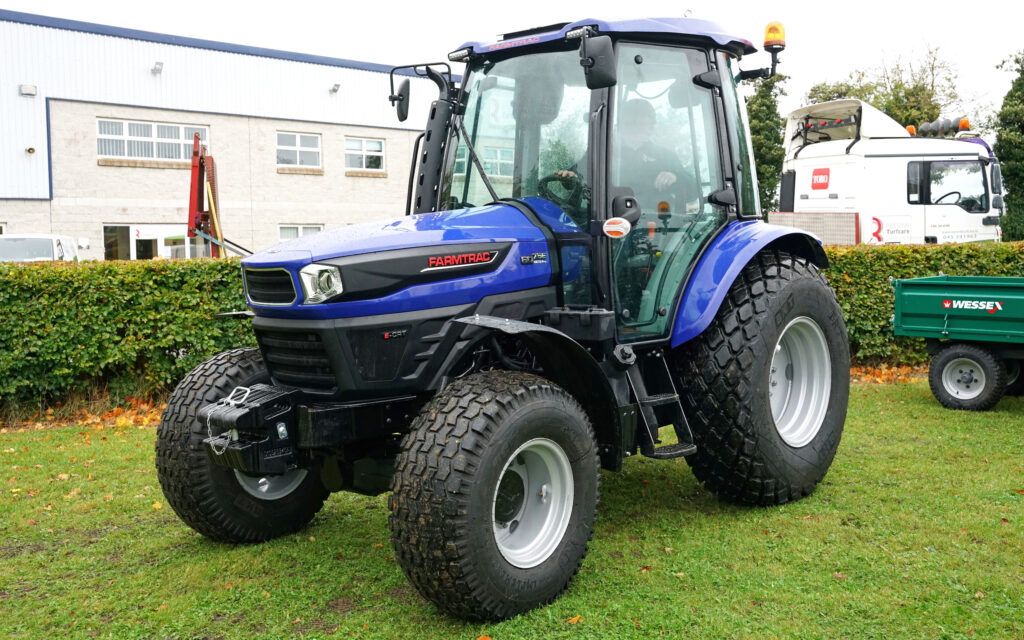A revolution will rarely happen overnight and despite the usual stream of commentators informing us that farming is going to change, the truth is that it is always in a state of flux and has rarely stood still, in recent times at least.
Each month presents the farm machinery world with something new, an item that jogs agriculture along a little; large disruptions are rare although companies will try to assure us otherwise.
In 2022, the process continued and here I have selected a highlight from each of the first six months of 2022 that moved the farm mechanisation along an inch or so. The second half will follow shortly.
January
Nexat was the big news in January. This is another ambitious attempt to replace the conventional tractor and implement as we know it and replace it with an idea that has been tried before, with mixed success.

Gantry systems are not new and perhaps the most successful was the first, installed in the early 19th century to grow vegetables for London. The principles of the idea are well established, it’s now a question of finding customers.
Nexat has recruited several other manufacturers to the project and even developed what amounts to a new combine harvester, yet it remains a radical approach that may struggle to gain wide acceptance.
February
As a corporation, Kubota as a whole is larger than any other tractor manufacturer, and like most Japanese companies, it is also very thorough in its investment decisions.

Taking a 50% stake in Escort Tractors of India may signal the start of a silent revolution, in that an industry leader now considers non western tractor production an important part of its future business
The global population growth is occurring mainly outside of the west, so this could turn out to be shrewd long-term move, one which is in stark contrast to the more familiar brands which wholeheartedly believe in digital technology as the major driver of growth.
March
The digital technology revolution is spoken of a great deal by companies, but this sometimes does not generates the enthusiasm at ground level that might be wished for, or expected.

On board systems are certainly being used in the field, but the great matrix of data management has yet to earn any great enthusiasm, or even be recognised by the majority of farmers as being of benefit.
Dolan Industries of Co. Mayo can demonstrate the many benefits of digital field management, as well as tractor management systems. Impressive as it is when all put together, customers still feel that it is a step into the unknown and may deter some.
April
Belt rakes or mergers? The description may differ but this tool burst onto the scene in 2022 despite there already being a handful already at work throughout Ireland.

This was, in the major part, due to Kverneland purchasing the specialist merger company, ROC of Italy, and later arranging a media trip out to visit the factory.
Initially it was the less aggressive handling of the crop which was featured as their chief advantage, but this soon gave way to the recognition that they could row up a field at a quicker pace than a rotary rake and this feature is likely to be the stronger selling point.
May
Although launched in March, the new 230hp tractor developed by the partnership of Krone and Lemken was first demonstrated publicly this month.

This was a significant move, for the two companies have taken advantage of the drive towards autonomy by entering the market in direct competition to the established players, rather than nibbling at the edges as some of the smaller field robot companies are doing.
As the car makers have found out, full autonomy is not an easy revolution to start and this tractor cannot be driven on roads, nor is it clear how European legislation affects operation in the fields. But it is a bold step which must have made other manufacturers sit up and take notice.
June
The time when a tractor company could simply divide its range up according to power is now gone, and it was Valtra launching its Q Series which underlined the point that different market segments are to be serviced by different tractor types.

The company has taken its 7.4L six-cylinder engine and built a range of tractors around it, all with the common theme of a continuously variable transmission (CVT) transmission and smart electronics.
The Q series is unashamedly a techno tractor that is designed first and foremost to fit into a digital way of farming. It is a noble concept, but the worry is that Valtra may be too far ahead of the revolution.

